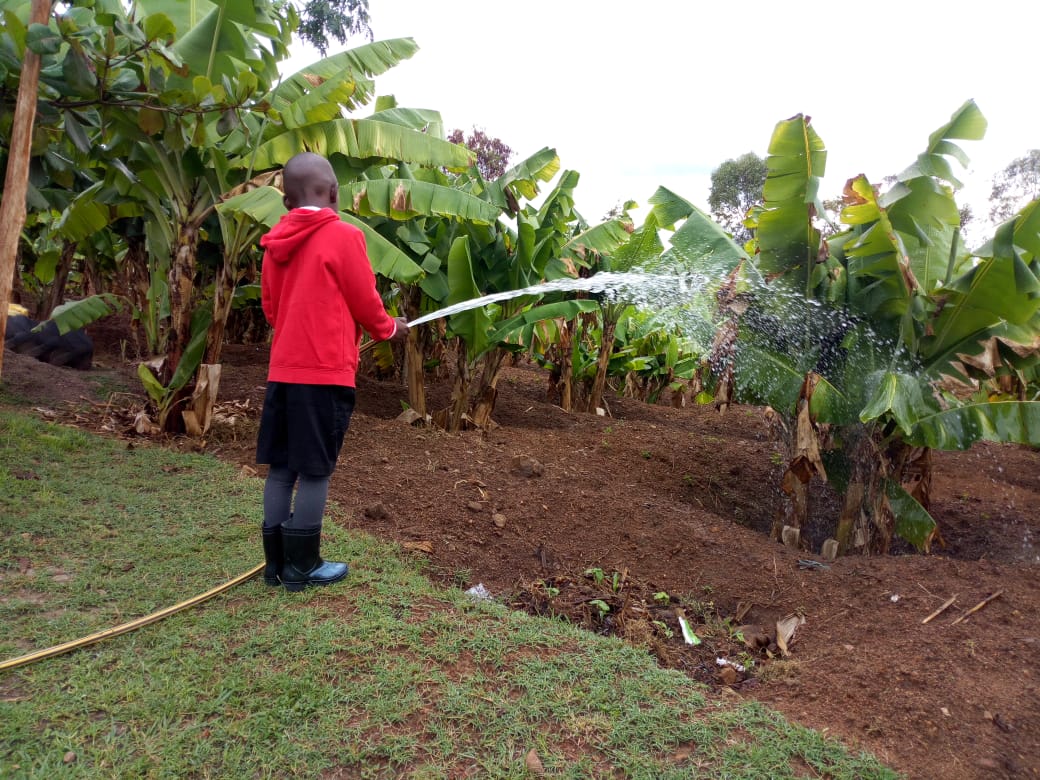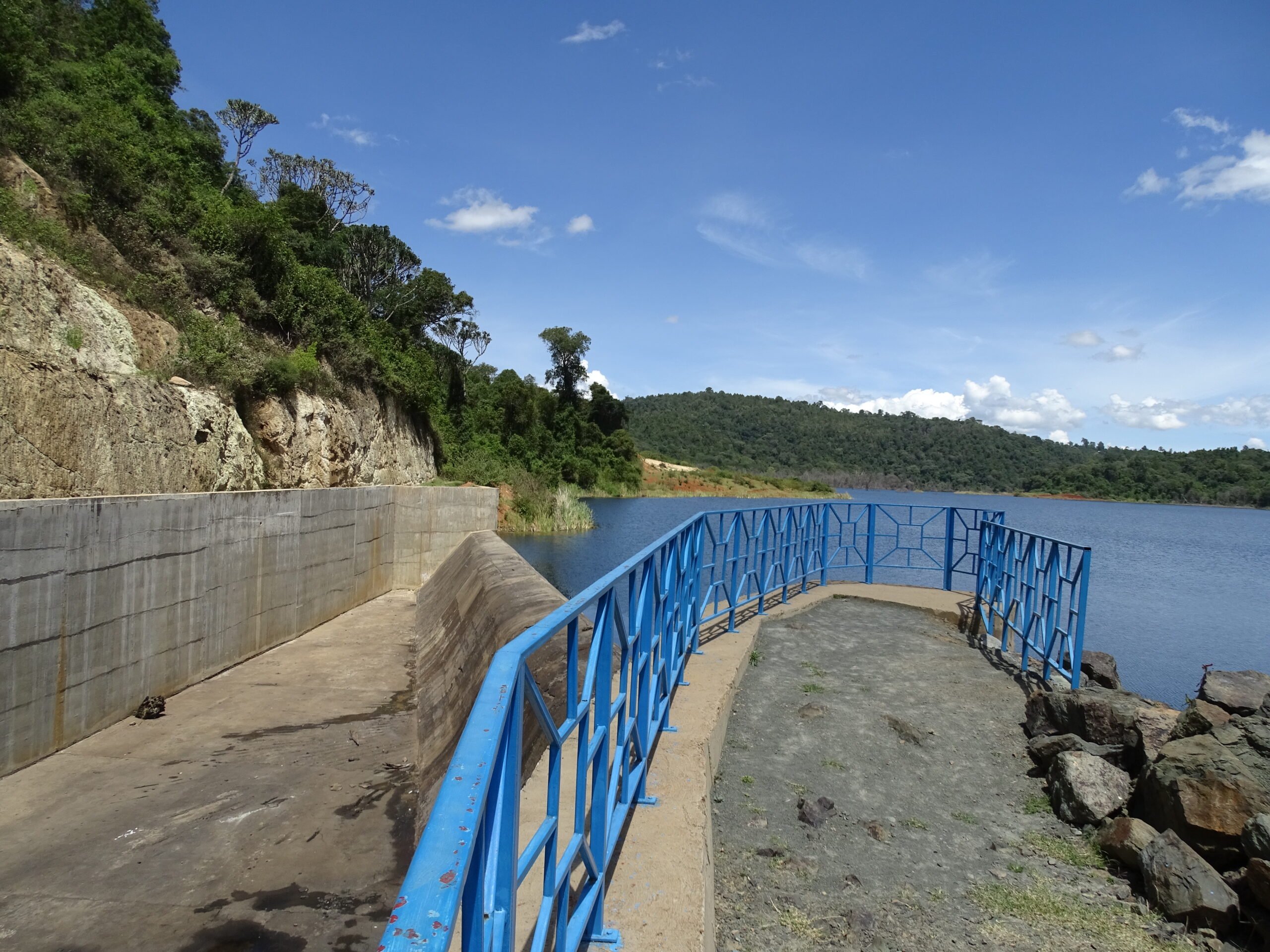The Suna stream in Kenya’s Homa Bay County is flowing back to life after the long rains started.
It has been a reliable source of water for the residents of Karateng village in Rachuonyo East sub-County.

During the dry seasons, the stream’s water level reduces, exposing the rocks underneath and making it easy for the villagers to walk across it.
Next to the stream is a spring from which the villagers fetch drinking water.

However, says Caren Okeyo, a resident, the spring has become unreliable, at times lacking water completely, forcing the residents to walk to River Awach, which is about ten kilometers away.
This has pushed the villagers to become innovative.
“I had to get a 10,000-liter water tank for storing rainwater harvested from the roof of my house. Buying the tank and installing it cost me about 775 dollars,” says Ms Okeyo.

George Ouma, however, went for a more permanent solution: he drilled a borehole, which he says is costly.
Mr Ouma says he has so far spent about 7,750 dollars but the work is not complete.
World Water Day 2023 is about accelerating change to solve the water and sanitation crisis.
“I installed a submersible pump in the borehole during the dry season and I was happy when I saw the water flow,” he says.
Mr Ouma has enough water for his banana plantation and to sell to the villagers.
“A 20-liter jerrycan goes for 3.8 cents. Before the rains started, people came on bicycles and motorbikes from as far as ten kilometers away to buy water,” he says.
To mark this year’s World Water Day, Mr Ouma says he would have supplied water to the villagers for free, “but now everyone is harvesting rainwater.”
According to the United Nations, World Water Day 2023 is about accelerating change to solve the water and sanitation crisis.
1.4 million people still die every year from diseases related to contaminated water and poor sanitation and hygiene.
In 2015, the world committed to Sustainable Development Goal (SDG) 6 as part of the 2030 Agenda – the promise that everyone would have safely managed water and sanitation by 2030.
However, seven years to 2030, at least 1.4 million people still die from diseases related to contaminated water and poor sanitation and hygiene every year, according to the World Health Organization (WHO) 2022 report.
 In November 2022, for instance, Kenya’s Ministry of Health issued a cholera alert after confirming 61 cases across six counties.
In November 2022, for instance, Kenya’s Ministry of Health issued a cholera alert after confirming 61 cases across six counties.
By January 2023, the outbreak of the diarrheal disease was reported in at least 15 counties.
A 2021 WHO/UNICEF report says that today, one in four people — two billion people worldwide — lack safe drinking water, while almost half of the global population, 3.6 billion people, lack safe sanitation.

Kenya’s National Water Harvesting and Storage Authority acting chief executive Sharon Obonyo says the solution to the water and sanitation crisis is continuous harvesting and storage of rainwater.
“With the effects of climate change that we have all experienced, we cannot afford to lose water through runoff. If we have one million households each storing 2,000 liters of water, this translates to two billion liters,” says Ms Obonyo.
“On this note, I urge the concerned government agencies to look into ways of lowering the cost of water storage tanks so that the public can afford them.”
“Everyone has a role to play, it could be planting trees to protect our water catchment areas, harvesting water at the household level, or keeping our environment clean.”
In the medium and long terms, she says her agency, in collaboration with the parent Ministry of Water, Sanitation and Irrigation, plans to construct dams with storage capacities of 10,000 to 50,000 cubic meters to store surface runoff during the rainy season.

Ms Obonyo says some of the projects her agency has completed include Chemususu Dam in Baringo County to serve a population of 600,000 people, Maruba Dam in Machakos County serving a population of 210,000, Kirandich Dam in Baringo County with a storage capacity of 413,000 cubic meters and Siyoi-Muruny’ Dam in West Pokot County with a capacity of 8.9 million cubic meters. It will serve a population of 350,000.
“Kiserian Dam in Kajiado County was meant to serve 253,000 people. However, this dam is now silted, hence affecting its capacity,” says Ms Obonyo.
A permanent solution to water shortage
Because drilling boreholes may be too expensive for individuals, she urges communities to pool resources and have a permanent solution to water shortage.
This is the route Mr Ouma, a teacher, took.
“I could not afford to drill a borehole and buy the accompanying water-pumping equipment alone so we decided to pool resources with my brother,” he says.
Ms Obonyo has one message concerning the theme — Accelerating Change in Water and Sanitation Services — of this year’s World Water Day: “Let us all bring that change in our small ways.”
“Everyone has a role to play, it could be planting trees to protect our water catchment areas, harvesting water at the household level, or keeping our environment clean. All these make a difference and we shall see the change we want,” she says.
